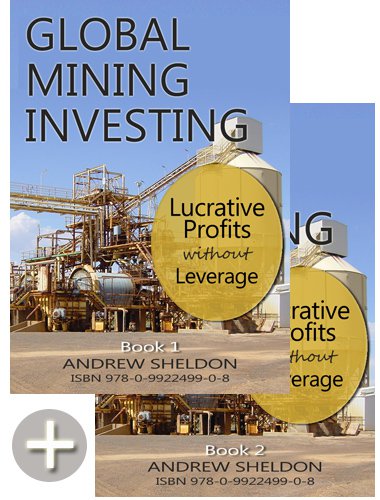The gold market has been disappointing a few people of late. In the midst of a meltdown of equities - a 10% fall - the gold price was pretty subdued, in fact it fell on several occasions, but recovered. Clearly those seeing gold as a 'safe haven' were matched by those needing to sell 'safe gold' to cover margin calls on their equity and other commodity exposures.
Well thats all well and fine, but what is the outlook for gold now?
Gold Fundamental Analysis
What we know about gold is that its:
1. Relatively cheap: Attractive when other asset classes are over-priced and central banks feel compelled to support those asset prices with easy money
2. Negative real yields: Gold is attractive when nominal yields on treasuries are low because inflation they are likely to be negative. So if gold lease rates are low and gold prices are considered low, then the metal is likely to be supported.
3. Uncertainty: Gold is attractive if there is a threat of war, whether on the battlefield or trade tensions. The rationale is that asset prices are supported by consumption and during wars capacity is directed from productive to destruction capacity, so paper money or higher taxation is required. Gold is taxed only at the point of production or sale (if profit), and even then there is the potential for unrecorded production or sale.
There are numerous misconceptions about gold that are supported by 'gold cynics', 'gold bugs' and gold producers alike. Really these arguments are often rationalisations by 'purists' that carry weight with the uninformed by virtue because their arguments are supported by alot of information. Some of these arguments are:
1. Gold is no longer relevant: Since gold's role as a unit of money was partially replaced by fiat paper money in 1933 (under Roosevelt), and then totally in 1971 (under Nixon) it never really lost its relevance. This point should be highlighted by the current price of the gold - around $655/oz.
2. Paper is not backed by gold: Well this is true, but it would be wrong to suggest that paper has no tangible assets backing , since under the modern banking system paper is created through the origination of credit, and that credit is backed by very tangible property. Home loans at the point of origination are backed by tangible collateral valued at 80-90% of the loan amount. Ever wondered why banks are reluctant lenders to business without tangible assets or regular income. The gold standard 'purists' would have us believe that they believe in a 'free market' but they were advocates of fixed price of gold, as when gold was fixed at $35/oz (pre-1971). But clearly that system didnt work since it required governments to subsidise its value. It actually makes more sense for the gold price to be free floating so gold is valued on the basis of supply and demand. Rest assured that there will not be too much volatility because the value of new gold output (2500tonnes) per annum is just 1.7% of the total above-ground supplies (150,000 tonnes). The implication is that gold would fall in value as mine costs fall but this would increase the purchasing power of all the existing gold in existence. This would be the productivity dividend. No other metal offers this benefit because other metals have a much larger proportion of their utility tied to industrial use.
3. Speculation is attributed to an excess of fiat paper: Whilst its true that fiat money does spark speculation, so does rampant wealth creation. When the global economy is growing at a pace that causes a rapid increase in incomes and falling interest rates, its understandable that people will be bidding up property prices. There is an expectation that they will miss out since people realise that the bull market will be sustained over a long period of time. The speculation arises merely because there is an expectation of a protracted increase in property prices, or equities. For this reason, weakness in equity prices are perceived as an opportunity to buy more rather than sell so long as the market supports credit creation. In western markets there is however another factor. The regulation of property markets through zoning regulations artificially raises the value of property.
Given these factors I would contend that gold is rising not because of fears of a financial crisis but because wealthy is growing whilst gold production is lagging in a number of countries. That means there are more buyers chasing less gold.
Gold Technical Analysis
In the chart below we can see that gold prices have been range-bound since Feb'07 between $640-690/oz. Currently gold is in a downtrend, and I expect it to fall back to $640/oz support. This view is supported by recent candles that show gold's failure to break the downtrend. Each rally is sold into. The good news is that gold was supported in the recent sell-down (10% equity market correction), but it remains in question whether the uptrend is supported. If this uptrend is broken, gold could move into a consolidation pattern or fall back to a lower support. Gold investors should sell gold if it fails to hold that uptrend line. Commonly when a trend is broken, it might recover to the trend, but then fall off thereafter..so the next week will be very important for gold.

Looking at the long term trend in gold in the chart below we can see that the current trend has been in place since July 2005. We can also see the historical importance of the $640 level. If that fails to hold, I think we are looking at a gold price of $US540/oz - upon which I expect support at gold's base line trend.
 Conclusion
ConclusionMy rationale for thinking gold might fall to this level is:
1. Strong global growth: The global economy is no lower US-centric since China and India are growing 3times the pace of the US. Whilst US GDP per capita might be 20x more than these countries, these 2 countries combined have 10x the population and increasingly they are contributing to global output.
2. Growth displaces yield: If global growth stays strong you can expect equities to be the focus and for weakness in bonds. There is the prospect that the Fed might provide the stimulus of lower interest rates to keep equities in play. I think the stimulus is likely to be a token 0.25% cut, and I think they will take it back when the market can hold it. I dont believe the Fed wants asset prices going any higher. I think they will be trying to keep then flat. The Fed will still be worried about inflation.
Anyway we will know very soon...










![[Most Recent Quotes from www.kitco.com]](http://www.kitconet.com/charts/metals/gold/t24_au_en_usoz_2.gif)
![[Most Recent Quotes from www.kitco.com]](http://www.kitconet.com/charts/metals/silver/t24_ag_en_usoz_2.gif)
![[Most Recent Quotes from www.kitco.com]](http://www.kitconet.com/charts/metals/platinum/t24_pt_en_uskg_2.gif)
![[Most Recent Quotes from www.kitco.com]](http://www.kitconet.com/charts/metals/palladium/t24_pd_en_usoz_2.gif)
No comments:
Post a Comment